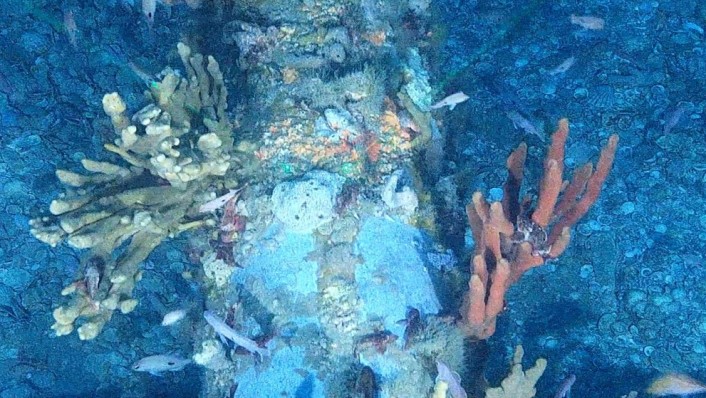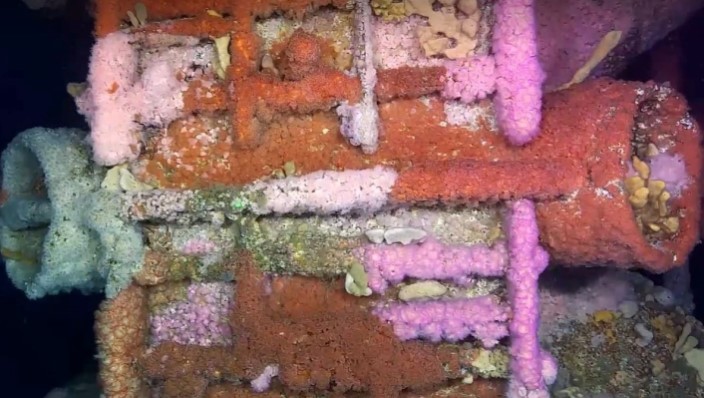New research led by the Australian Institute of Marine Science (AIMS) in collaboration with Deakin University and ORCAS Consulting found offshore oil and gas infrastructure plays a minor role in maintaining regional populations of marine life in north-west and south-east Australia.
In two journal articles, researchers found that the presence, partial, or full removal of decommissioned oil and gas infrastructure in the Bass Strait, between Tasmania and Victoria, and the north-west shelf of Australia would likely have a low impact on the dispersal processes and long-term persistence of several fish and bottom dwelling species.
The localised benefits to fish and bottom-dwelling invertebrate species supported by these structures may help explain the abundance and diversity of marine life often observed around them.
Many marine organisms start out life as larvae, and these larvae rarely remain in their original habitat. They often travel or disperse via oceanic currents before arriving at suitable habitat, near or far, where they can settle, mature and reproduce. This process is known as connectivity and is important because it helps marine populations to maintain genetic variability and viability into the future.

AIMS principal research scientist Dr Di McLean, who was a co-author on one of the papers, said that as more oil and gas structures cease functioning and require , science addressing concerns around their impact and removal is becoming ever more critical.
“There is that oil and gas structures can increase the local abundance and diversity of marine organisms, particularly in seascapes where natural habitats are scarce,” said Dr McLean.
“However, one of the most significant knowledge gaps and is the need to understand how offshore oil and gas infrastructure influences regional processes such as and dispersal of marine organisms – this is where our research comes in.”
AIMS principal research scientist Dr Eric Treml, senior author on both papers, added: “These new findings suggest that if structures like platforms are removed, there may be little regional impact on how the larvae of marine organisms disperse to reach new habitats and how marine populations will be sustained.”
The Bass Strait study found that oil and gas platforms play a minor role in supporting the long-term health and survival of the five representative species (three rocky reef fish and two invertebrates) studied, but subsea pipelines appear to facilitate important dispersal processes in their early life stages.
Published recently in the journal , the modelling study combined ocean current dynamics with information on the behaviour and biology of reef ocean perch (Helicolenus percoides), long-spined sea urchin (Centrostephanus rodgersii), butterfly perch (Caesioperca lepidoptera), jewel anemone (Corynactis australis) and bluethroat wrasse (Notolabrus tetricus). These species are representative of local marine communities and are often observed on offshore infrastructure in this region.

The researchers found that platforms were a modest source of connectivity for the jewel anemone, despite the species dominating coverage of these structures. Platforms were not important destinations or stepping stone habitats for the other species studied, so their full removal would have a low impact on the connectivity of those species.
In contrast, sections of subsea pipelines were found to be source and destination habitats of varying strengths for most study species, except for the long-spined sea urchin. Removing these pipelines would have a moderate impact on the connectivity of the fish populations studied and a low impact on the invertebrates studied.
The researchers recommend that decisions to remove offshore infrastructure, either in full or in part, be made on a platform-by-platform basis and consider the contributions of pipelines to regional connectivity processes.
Natural habitats important for connectivity
The north-west study, published in the journal , found that oil and gas platforms and subsea wells do not have a significant impact on the dispersal and persistence of two fish species and a coral (the saddletail snapper – Lutjanus malabaricu, orange cup coral – Tubastraea, and the red lionfish – Pterois volitans).
The researchers found that the natural reefs in the system contributed overwhelmingly as the main sources of the fish and invertebrate larvae.
AIMS research scientist Dr Ronen Galaiduk, a co author on both papers said: “The natural rocky reefs in the Bass Strait and tropical reefs in the north-west were critical sources, destinations and promoted local-scale connectivity for all of the species studied.”
In the north-west, the researchers found that oil and gas structures contributed as destinations for larvae and as local stepping stones between various habitat patches, but only enhanced the ecological connectivity in a limited way for the study species.
Dr Galaiduk said: “Local stepping stones can be important for increasing population numbers of a fish, like the saddletail snapper, helping to boost recruitment from protected or remote areas which are typically more abundant in marine life. But these oil and gas structures may also serve as stepping stones for invasive species to spread further.”
The lead author on the north-west research was Julia Sobol from Deakin University.
The research conducted in the Bass Strait was funded by Esso Australia Pty Ltd.
Main image: Jewel anemones cover an underwater section of an oil and gas platform. Image: AIMS







